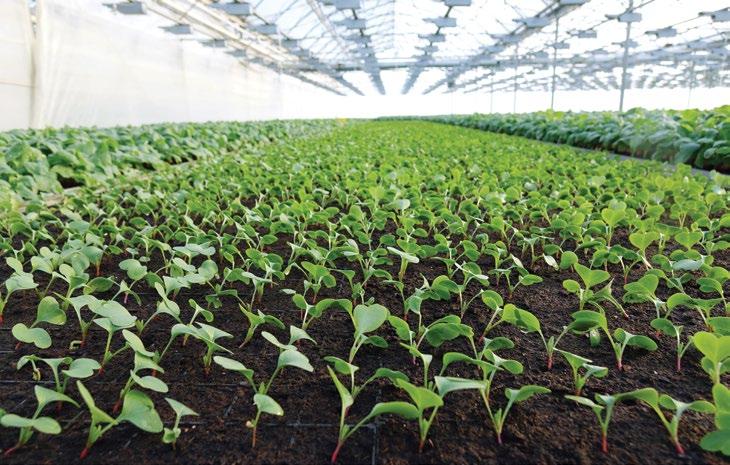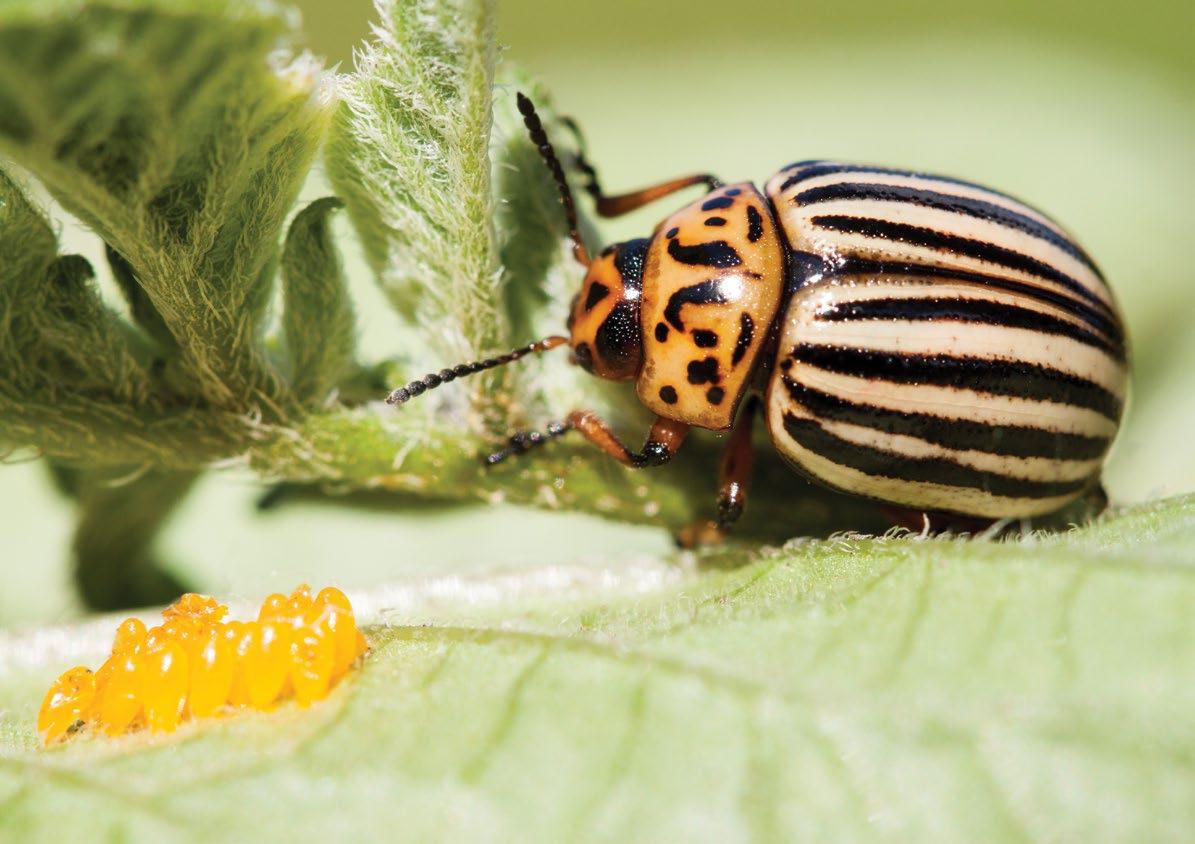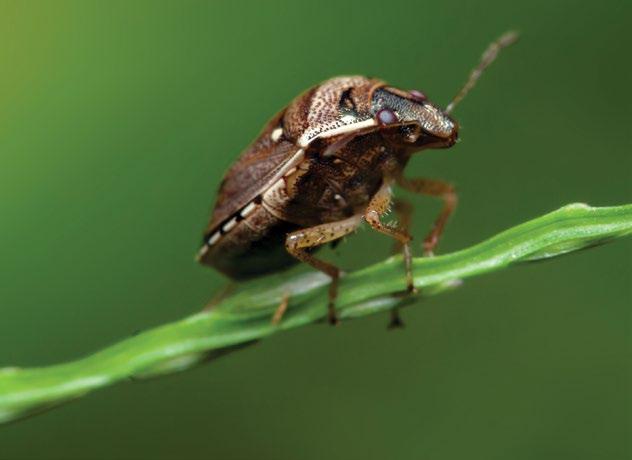
5 minute read
Hygiene practices
3 USING certified seed and purchasing clean seedlings from reputable supplies is the first step to protecting your crops to safeguard your farm against pests.
Advertisement
to eliminate pests and disease
BY MADELEINE QUIRK BIOSECURITY OFFICER, AUSVEG
One of the best defences against pest and diseases on your farm is to implement on-farm hygiene practices. These may limit the entry, spread and establishment of pests and diseases, and help to protect your crops. AUSVEG Biosecurity Officer Madeleine Quirk reports.
Farm hygiene is the practice of implementing simple yet effective measures on-farm to reduce the risk of entry, spread and establishment of plant pests. Farm hygiene is the first step to helping growers protect their own businesses and the wider horticulture industry, while minimising production losses and unnecessary costs associated with pest outbreaks. Every day, farm inputs such as planting material and packaging, bins and pellets are brought onto farms to be used in the production process. If they are not managed correctly, farm inputs can create significant biosecurity risks and may seriously affect a grower’s bottom line. This is also the case for waste and weeds that are not managed appropriated. However, farm hygiene practices — if implemented correctly — have the potential to significantly reduce these risks.
Planting material
Planting materials such as seeds, seedlings, soil, compost and fertiliser can be a reservoir for plant pests. While these inputs are crucial elements of any farm business, there are steps that can be taken to mitigate the risk of spreading unwanted pests and diseases. Using certified seed and purchasing clean seedlings from reputable supplies is the first step to protecting your crops to safeguard your farm against pests. Maintaining a register of incoming seeds and seedlings, including where, when, and how many were received, will allow for the application of tracing activities should a new pest or disease be detected. When using certified seed, suppliers must provide information on assumed that they are clean on arrival, so the product’s source and testing history, immediately inspecting, disinfecting and so maintaining a record of test results disposing of any existing organic material will help to provide further protection. is key, as it may be harboring insects Upon planting, recording the field in or pathogens. which the seeds or seedlings were Beware waste and weeds planted can further assist with traceback activities should they need to occur. Before planting, consider separating new nursery stock from production areas and undertake regular surveillance of this stock until you are confident that they Waste and weeds pose a risk to your farm’s biosecurity. Waste products that are stagnant, such as fallen crops and leaf material, can quickly become incubation hubs for pests and diseases. are not carrying pests and diseases. To reduce this risk, store waste Similarly, fertiliser should always be away from nurseries, growing areas examined for pests and diseases before and water sources, and always being used on-farm. You can reduce your risk of purchasing contaminated fertiliser by ensuring that it meets industry standards, such as dispose of waste quickly and in an appropriate manner, such as deep burial or burning. purchasing fertilisers certified Similarly, pests and diseases by the Fertilizer Industry Federation of Australia (FIFA) Purchase Code of Practice or by other industry quality control programs. Organic fertilisers may also pose a On-farm hygiene practices limit the entry, spread and establishment of pests and diseases, and help protect yourcrops. tend to harbour in weeds while they await a more suitable host plant. Maintaining a weed-free buffer zone around the growing area will help stop the spread pests risk to farm health so they and diseases in your crops. should be monitored carefully To ensure that you keep and treated correctly before on top of weed management, being used. consider developing an on-farm weed Packaging, bins and pellets management plan. Packaging, bins and pellets may not come to mind when you think of pests and diseases, yet they are a key pathway for pests to hitch a ride into a new area. Packaging, bins and pellets are a core part of the supply chain but are often reused and recycled. It should never be Farm hygiene practices may be simple, yet they can significantly protect your business. For information on other farm hygiene practices, including advice on managing biosecurity risks associated with staff and visitors, please visit farmbiosecurity.com. au/essentials-toolkit.

3 COLORADO potato beetle is a pest of solanaceous crops including potato, tomato, and eggplant.
CPB is yellow to orange in colour with dark stripes along its wings.

Exotic pests to keep an eye out for in summer in WA
This summer, it’s more important than ever to keep an eye out for exotic pests including brown marmorated stink bug (Halyomorpha halys), Colorado potato beetle (Leptinotarsa decemlineata), and the notifiable pest fall armyworm (Spodoptera frugiperda). Brown marmorated stink bug (BMSB) is an exotic pest that is not found in Australia, but there is a heightened risk of BMSB entering the country by hitchhiking on imported goods between September and April. They will commonly hitch a ride in shipping containers, vehicles, and other imported goods entering Australia. BMSB adults have distinctive shield shapes, variable body colour, and are approximately 12–17mm in length. They also have distinct black and white bands on their legs, antennae and rear abdomen. BMSB feeds on more than 300 plant species including many vegetables, fruit, trees and ornamental plants, posing a risk to Australia’s horticulture industries. Colorado potato beetle (CPB) is a pest of solanaceous crops including potato, tomato, and eggplant. Approximately 1cm in length, CPB is yellow to orange in
3 BMSB adults have distinctive shield shapes, variable body colour, and are approximately 12–17mm in length.

colour with multiple dark stripes along its wings. Whilst CPB is not present in Australia, it is important to monitor for this pest over summer to ensure it is detected quickly. Fall armyworm (FAW) has been detected across some parts of Western Australia, however it is still considered a notifiable pest. Suspect FAW detections should be immediately reported to the Exotic Plant Pest Hotline on 1800 084 881. Early detection and reporting of FAW will help protect WA’s plant industries and the environment. Visit www.agric.wa.gov. au/pests-weeds-diseases/ for more information.
MORE INFORMATION
Any unusual plant pest should be reported immediately to the relevant state or territory agriculture agency through the Exotic Plant Pest Hotline (1800 084 881).
Contact AUSVEG Biosecurity Officer Madeleine Quirk on (03) 9882 0277 or madeleine.quirk@ausveg.com.au. The Farm Biosecurity Program is funded by the Plant Health Levy.










